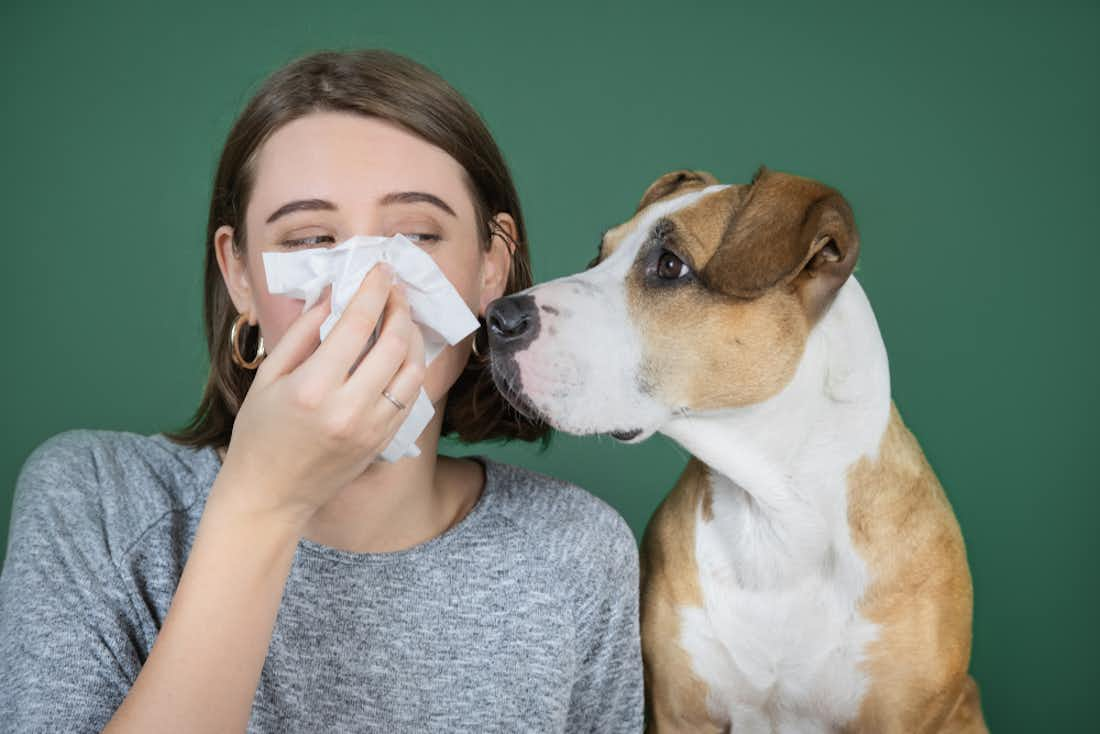Mar 17, 2022
The Top 9 Hypoallergenic Cats
5 minute read
If you’ve scrolled on TikTok or clicked around on YouTube for more than a minute, you’ve probably seen some videos of cats doing something funny. If you love chaos and calamity, but you also love having a furry puffball to cuddle up with every single night, a feline friend may be the right move for you.
As snuggly and sneaky as cats can be, they can also be a source of sniffling and sneezing. From shedding fur to shedding dead skin cells, cats are one of the most common indoor allergens for the American population. As many as three in ten people have a pet allergy.
The good news is that not every cat breed will wreak havoc on your sinuses. So if you’re in the market for a cat but you’re hoping to avoid the coughs, here are some of the best “hypoallergenic” breeds.
It is worth noting that absolutely no breed is 100%, truly hypoallergenic, and if you do have a cat allergy, you should consult with an allergist and consider immunotherapy.
What Causes Cat Allergies?
While cats can be mischievous, they’re certainly not _trying _to cause the allergy suffering that they might bring along. The reason that pets are such a common allergen is because of dead skin flakes or dander.
These skin flakes are generally harmless particles. However, the immune system doesn’t always know that. For some people, pet dander triggers an immune response in reaction to a foreign substance.
The body produces proteins called antibodies which help fight the allergen. While these antibodies form when the immune system perceives an actual threat, they can also form if you have IgE antibodies for specific allergens (like cats and dogs).
Pet hair itself is not an allergen. However, the hair can hold onto allergens like pollen, dust, and dander. For that reason, “hypoallergenic” cats tend to have shorter hair which makes it harder for them to hold onto all of those triggers.
Hypoallergenic Cat Breeds
There’s no such thing as a truly “hypoallergenic” cat – there are just certain breeds that are less likely to cause a severe reaction. Let’s take a look at some of the best ones.
1. Sphynx
If you’re looking for a unique animal that is also as “hypoallergenic” as possible, a Sphynx is your go-to. These guys don’t have any fur, making them an absolute dream for allergy sufferers.
However, these cats also require special care that most other breeds don’t. Since they don’t have hair, they’ll accumulate oils on their skin. This means you’ll need to bathe them weekly in addition to the regular maintenance that a cat requires.
But if you’re willing to put in the extra work, this is the closest you can get to a “hypoallergenic” kitty.
2. Devon Rex
Rexes will appear on this list a few times because they have less fur than most other cat breeds. Typically, cats have three layers of hair. The first is a top layer of hair called the “guard, " the protective outer coat of fur. Some cats then have a layer underneath called the “awn,” which helps with insulation and temperature balance. Finally, there’s the undercoat, or “down” hairs.
Devon Rexes possess only the downy coat of fur, meaning that they are super short-haired and are less likely to pick up potential allergens. Devon Rexes are probably the most “hypoallergenic” cats on this list that still have a little bit of fur.
3. Cornish Rex
Cornish Rexes have a little bit more hair than their Devon cousins, but they’re still very short-haired animals. This means they’ll shed less and carry fewer allergens in their coats. Not to mention, they won’t throw around as much hair on your furniture and linens, which is perfect if you like to keep an extra tidy home with minimal effort.
4. Russian Blues
If you took a look at a furry and fluffy Russian Blue, you probably wouldn’t think that it’s a “hypoallergenic” breed. However, this cat might be just as “hypoallergenic” as the short-haired cats on this list.
Why exactly is that? Russian Blues produce lower levels of the Fel d1 protein, the major allergen responsible for symptoms of a cat allergy. Most cats possess high levels of this protein in their saliva, urine, and sebaceous glands.
But not the Russian Blue! These felines have much lower protein levels, so you can get the feeling of snuggling with your kitty without needing to worry about sneezing all over.
5. Oriental
Oriental shorthairs are a unique-looking breed of cat with a super short outer coat. They seem to produce less dander than some other breeds despite modest shedding levels. While these aren’t the most “hypoallergenic” cats in the world, they’re revered for their tame temper and friendliness, making them a great companion as long as you’ve got some allergy relief medications handy.
6. Siamese
These beautiful cats are a lot friendlier than they appear in Lady and the Tramp. Plus, they’re one of the most “hypoallergenic” breeds.
Their extra short coats limit shedding while also preventing them from picking up pollen, dust, and other allergens as they go about their day. These loyal companions are also insanely intelligent — many cats of this breed can even learn how to fetch.
Even long-haired Siamese cats have less Fel d1 proteins than other breeds, making these a great pick to soothe your allergy woes.
7. Siberian
Siberian cats have gorgeous, long, fluffy coats. We know it sounds like an absolute nightmare for allergy sufferers, but believe it or not, it’s not so bad.
Much like the long-haired Siamese, Siberians produce less of the Fel d1 proteins in their saliva and urine, so they may be a great option if you want the snuggly benefits of a cat without the watery eyes and runny nose.
8. Javanese
Javanese cats are a type of Oriental breed known as Colorpoint Longhairs. Despite their name, they don’t have very long hair. This means they shed less and are less likely to be carrying around allergens within their coats.
9. Female Cats
While female cats aren’t a breed in themselves, they produce less Fel d1 proteins than intact males. For that reason, you might be able to get away with any cat breed as long as you choose one who is female.
Additionally, choosing a female cat in any of the breeds listed above will only serve to give you double the protection against allergy symptoms.
Preventing Cat Allergies
You shouldn’t need to let allergies get in the way of adopting the cat that feels right for you. The good news is that even if you don’t get a “hypoallergenic” cat, you can still co-exist peacefully with a new rescue with the right allergy treatments.
Sublingual immunotherapy is a form of allergy immunotherapy that involves placing tablets under your tongue. This process gradually exposes you to a given allergy trigger over time, allowing your immune system to adjust and become less reactive to the substance: no needles, no pain, and no fuss.
This prescription treatment is clinically proven, and you can get it for as low as $25 in the Cleared shop with insurance. Take your free allergy consultation today to see if immunotherapy can reduce your symptoms.
Of course, if a furry feline is begging to come home with you today, you’ll need something that works fast. Allergy relief medications like antihistamines can work fast to inhibit the production of symptom-causing chemicals that your immune system releases. These can alleviate symptoms in no time, helping you feel more comfortable throughout the day.
In Conclusion
There are good reasons why cats are such popular pets. They’re easy to take care of, they’re cuddly, and they’re sure to make you laugh. However, if you’re an allergy sufferer, they might also make you cry.
The good news is that “hypoallergenic” cat breeds like Sphynx, Rexes, Orientals, Siberians, and Russian Blues are less likely to shed or carry allergy-causing proteins, meaning you can feel more comfortable while still reaping the benefits of a kitty.
However, no breed is truly hypoallergenic, and if you are really allergic, you should see an allergist and think about allergy immunotherapy.
You shouldn’t need to spend another day sneezing and wheezing because of a harmless animal. Take your free allergy consultation to speak with a licensed online allergist to figure out the best course of treatment for you.
Sources:
Allergic to Your Pet? Learn about Dog and Cat Allergies | Asthma and Allergy Foundation of America



